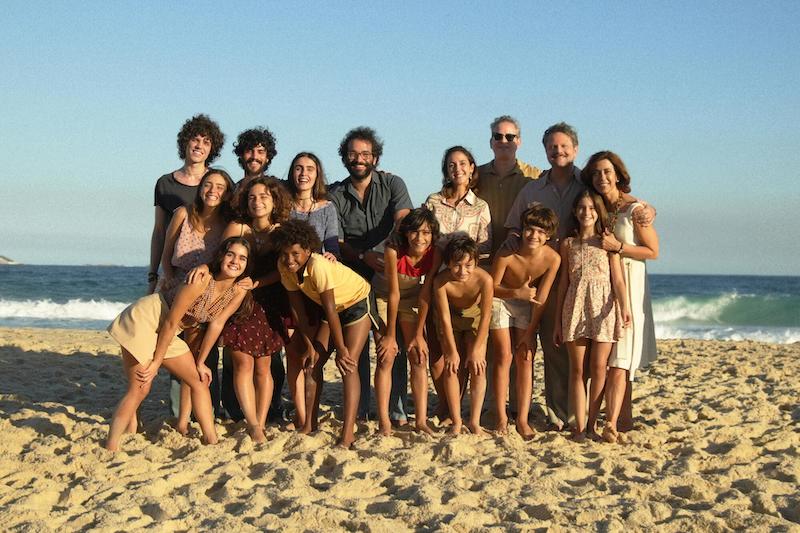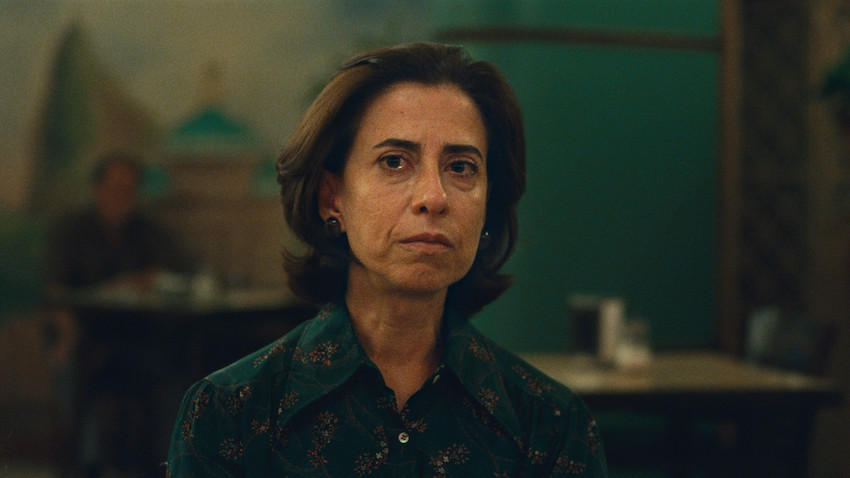Just like Britain’s ‘stiff upper lip’, that indominable spirit in the face of adversity, Brazil has a dominant personality trait – open-hearted, ebullient – that tends to obscure the reality of its many social, economic and political travails.
There’s also a part of the Brazilian national psyche that resists reflection, which is why, perhaps, its filmmakers have dwelled less on their years under military dictatorship, between 1964 and 1985, than you might expect and certainly less memorably than, say, their counterparts in Argentina and Chile.
But now Walter Salles, one of his country’s most respected and influential directors (Central Station, The Motorcycle Diaries), has taken that plunge into the past. I’m Still Here plays on dualities: between optimism and cynicism, kindness and cruelty, courage and despair. It also adopts the vantage of the survivors, who must rebuild despite their loss. It’s a nuanced and undemonstrative film, all the more powerful for its restraint.
The true story is adapted from the 2015 memoir of the same name, by Marcelo Rubens Paiva, whose family was one of many to experience the fear and confusion of one of their number being ‘disappeared’ by the regime. The adaptation is by Murilo Haser and Heitor Lorega, but Salles himself knew the Paiva family well, spending much of his youth in their home in the Sixties, and this surely informs the film, not least the intimacy and warmth of the family scenes that are so integral to it.  It opens in Rio de Janeiro in 1971, around the time that the dictatorship entered its second, more repressive phase; though at first, amid the comfort, gaiety and openness of the Paiva daily routine, you wouldn’t know it. Rubens Paiva (Selton Mello) is a civil engineer and former congressman, who was briefly in self-exile after the coup but has returned and is now living an affluent life with wife Eunice (Fernanda Torres) and their five children. Salles starts with the kids playing on the beach – this is the picture postcard Rio, the sea, the sand, the Sugarloaf mountain in the background – before returning home with a stray dog, which they persuade their parents to keep. The youngsters dance, listen to music, sing, playact, and they film themselves on super-8 (images with which Salles and cinematographer Adrian Teijido vividly capture their youthful vibe). This is the kind of family that forever documents its life and happiness, and home movies will add texture and pathos to all that follows.
It opens in Rio de Janeiro in 1971, around the time that the dictatorship entered its second, more repressive phase; though at first, amid the comfort, gaiety and openness of the Paiva daily routine, you wouldn’t know it. Rubens Paiva (Selton Mello) is a civil engineer and former congressman, who was briefly in self-exile after the coup but has returned and is now living an affluent life with wife Eunice (Fernanda Torres) and their five children. Salles starts with the kids playing on the beach – this is the picture postcard Rio, the sea, the sand, the Sugarloaf mountain in the background – before returning home with a stray dog, which they persuade their parents to keep. The youngsters dance, listen to music, sing, playact, and they film themselves on super-8 (images with which Salles and cinematographer Adrian Teijido vividly capture their youthful vibe). This is the kind of family that forever documents its life and happiness, and home movies will add texture and pathos to all that follows.
The national mood is suddenly on red alert, with the kidnap of the Swiss ambassador by left-wing radicals. Outside the domestic bubble, the reality of the state’s repression is first evidenced when the oldest daughter, Vera, and some friends are pulled over in a roadblock by soldiers and given a terrifying inspection at gunpoint. At home, there are intimations, through oblique phone calls and mysterious deliveries, that Rubens is quietly doing his bit to help the resistance. In his brief scenes, Mello, a prominent figure in Brazilian cinema, offers a charismatic, warm presence, in the heart of the family and the film itself, that will soon be conspicuous by its absence.
The script cleverly suggests the psychological juggling act of the time, as the Paivas and their educated, middle-class friends outwardly convey confidence and calm, continuing their lives as though nothing is happening, while some secretly aid those who are fighting the regime, and others leave the country for safer shores. Indeed, when Vera is sent to London with another family, ostensibly for a student trip, one wonders why the whole family doesn’t go with her.
Their smiling facade is epitomised by a group photo on the beach, on the eve of Vera’s departure. Rather than ‘cheese’, the refrain is ‘Ditch the dictators.’ But, not long after this, comes the knock at the Paiva door.
Rubens is taken first. Behind him, a handful of thugs remain to watch over Eunice and the kids – saying nothing, revealing nothing, shifty and glowering. This is one of the most frightening, unbearably tense passages of the film.
Eunice will eventually be taken also, along with her second eldest, Eliana (Luiza Kozovski). Salles focusses on the mother, kept in squalor for days in an off-the-books prison, endlessly interrogated, but given no reason why she’s there. In each interview she is shown an album of headshots and asked if she recognises anyone. One one occasion, her husband’s photo has been added to the pages she’s asked to inspect; on another, those of herself and her daughter – a chilling, Kafkaesque masterstroke in intimidation. As screams echo in the background, an interrogator stubs his cigarette on the ground, allowing us to see that the stone is soaked in blood.  Torres is now flexing her muscles, revealing Eunice’s mettle: despite the pressure, the uncertainty over her own safety, her concern for husband and daughter, this formidable woman remains composed, watchful, resilient. The stillness of this terrific performance heightens the horror around her, far more than any showy anguish.
Torres is now flexing her muscles, revealing Eunice’s mettle: despite the pressure, the uncertainty over her own safety, her concern for husband and daughter, this formidable woman remains composed, watchful, resilient. The stillness of this terrific performance heightens the horror around her, far more than any showy anguish.
On Eunice’s release, the same courage and resolution kicks into overdrive; before, her mission was to survive; now it is to secure her husband’s release; later, it will be, sadly, to learn the truth of what happened to him, while holding the family together. Up against the state machinery of lies and misinformation, Eunice’s mantra is, simply, “We can’t do nothing.” Her battle against institutionalised deceit will ring true to many in today’s increasingly Trumpian world, while the film’s more violent horrors can only add to current concerns about the rise of the far-right, in Brazil and internationally.
Alongside Salles’ relationship with the family he’s depicting, the one with his lead actor adds its own resonance. It’s now 30 years since he and Torres first collaborated, in his breakthrough feature Foreign Land (1995). And when, in 1998, Salles’s multi-award winning Central Station heralded the re-emergence of his country’s cinema, after decades in the doldrums, his star was Fernanda Montenegro, Torres’ mother.
The nonagenarian Montenegro fittingly appears at the end of I’m Still Here, as the older Eunice – mother and daughter lending their character the same, forbiddingly doughty stare. In January, Torres became the first Brazilian woman to win a Golden Globe for best actress. And she is only the second to be nominated for an Oscar; the first was Montenegro.
The film itself has gone one better than Central Station, in being nominated not only for best international feature by the American Academy, but best feature. It marks a well-deserved return for its director, whose last feature was the Jack Kerouac adaptation On the Road, in 2012. Salles utilises all his powers here: the skill with actors, across the range of experience; the creation of a well-researched, beautifully detailed milieu; classic framing (in gorgeous 35mm with an appropriately Seventies grain and palette) combined with flashes of more organic filming that will bring a particular moment alive; the whole imbued with a humanity that offers hope amid the tragedy.













Add comment